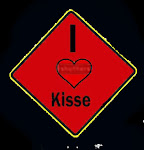Light is always the most important for the photograph . Our eyes are always better than the camera lens . While you may be able to see a scene perfectly well with your eyes, cameras do need a bit more light than our eyes in order to function properly. You do not need any fancy hand-held photography light meters for this step. The meter in the camera will work perfectly well. Simply point your camera at your intended scene and press the shutter halfway down. However, be sure that you point your camera at the darkest part of the scene you are taking that you want to be visible in your image. If you take a meter reading from a brightly lit fountain, that beautiful oak tree behind it catching the light will be too dark to appreciate. Take your reading from the oak tree instead. Look at the readings it gives you. It may say that you need a flash, or if you have a SLR, you may see the metering bar showing you how much underexposed our image will be at your current settings. If your camera does not have any adjustment options other than a nighttime setting, then turn the dial to your camera's nighttime or landscape setting and skip down to part 4 of this section. If you camera has other abilities, use them. There are four things you will set on your camera for nighttime photography film speed , aperture , shutter speed , flash You will use flash to "fill in" areas that need additional light. Remember that flash does not have an unlimited range so this works best for areas relatively close (about 4 to 9 feet) from you. If you use your camera's on-board flash I would recommend using it only when you must illuminate a person. If you have an add on flash that works with your camera you can use the fill-flash feature to set it to less power and illuminate things like the bases of lighted fountains that may otherwise be lost in shadow. Shutter speed -Unless you are shooting nighttime sports or another situation where you need to freeze motion, your shutter speed will be your third step. Set your shutter speed for a proper exposure on your metering bar. Remember to take your meter reading from the darkest part of the scene you want to appear well lit. Aperture -The aperture will be determined in mostly by your subject. Aperture controls how much depth of your image will be in focus and will be marked on your camera as F-Stop. Film speed - This is marked by "ISO" on some cameras. Unless you are shooting nighttime sports, use a slower film speed. This will reduce the grain visible in your images and produce a much clearer image. Now you can take the photograph if you shake the camera the photo wont be nice so you should be stable with hands or we can use Tripods which are the most common choice for a stabilizing but do not extend the tripod to its fullest height. Most low-cost tripods are not stable at their full extensions and will still produce a residual shake from the pressure you use to press the shutter button. If you do not have a tripod or you are not allowed to use one in your location, there are other options -- Beanbags, backpacks, rolled up jackets, or even purses can work very well. platform,
Wednesday, January 30, 2008
Subscribe to:
Post Comments (Atom)



2 comments:
these info quite intersting....
A significant amount of this post is copied without permission from http://photography.about.com. Please remove this post immediately as is required by international copyright laws.
Post a Comment